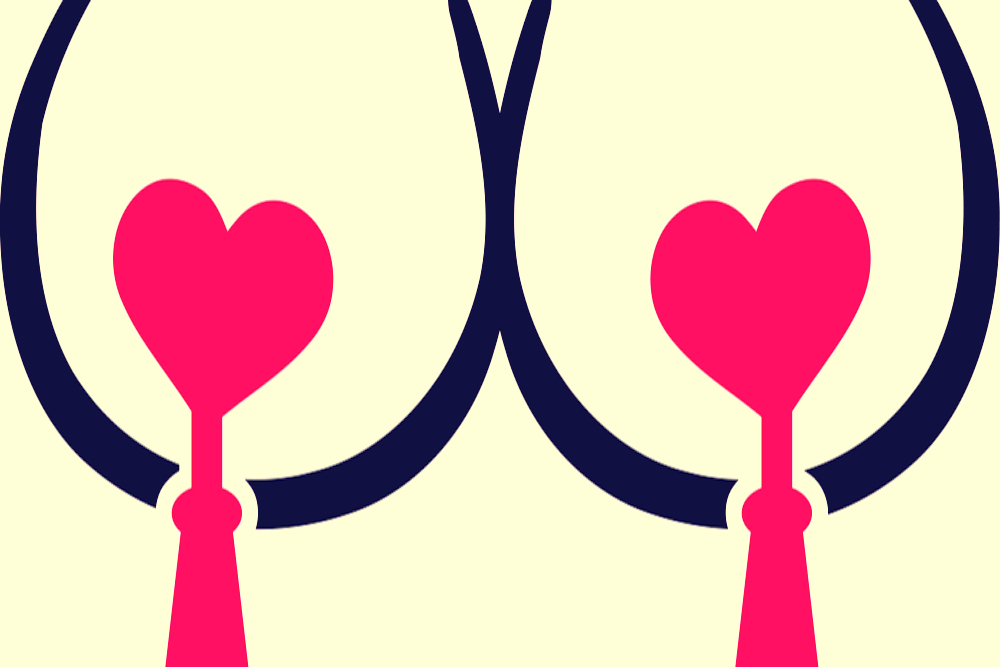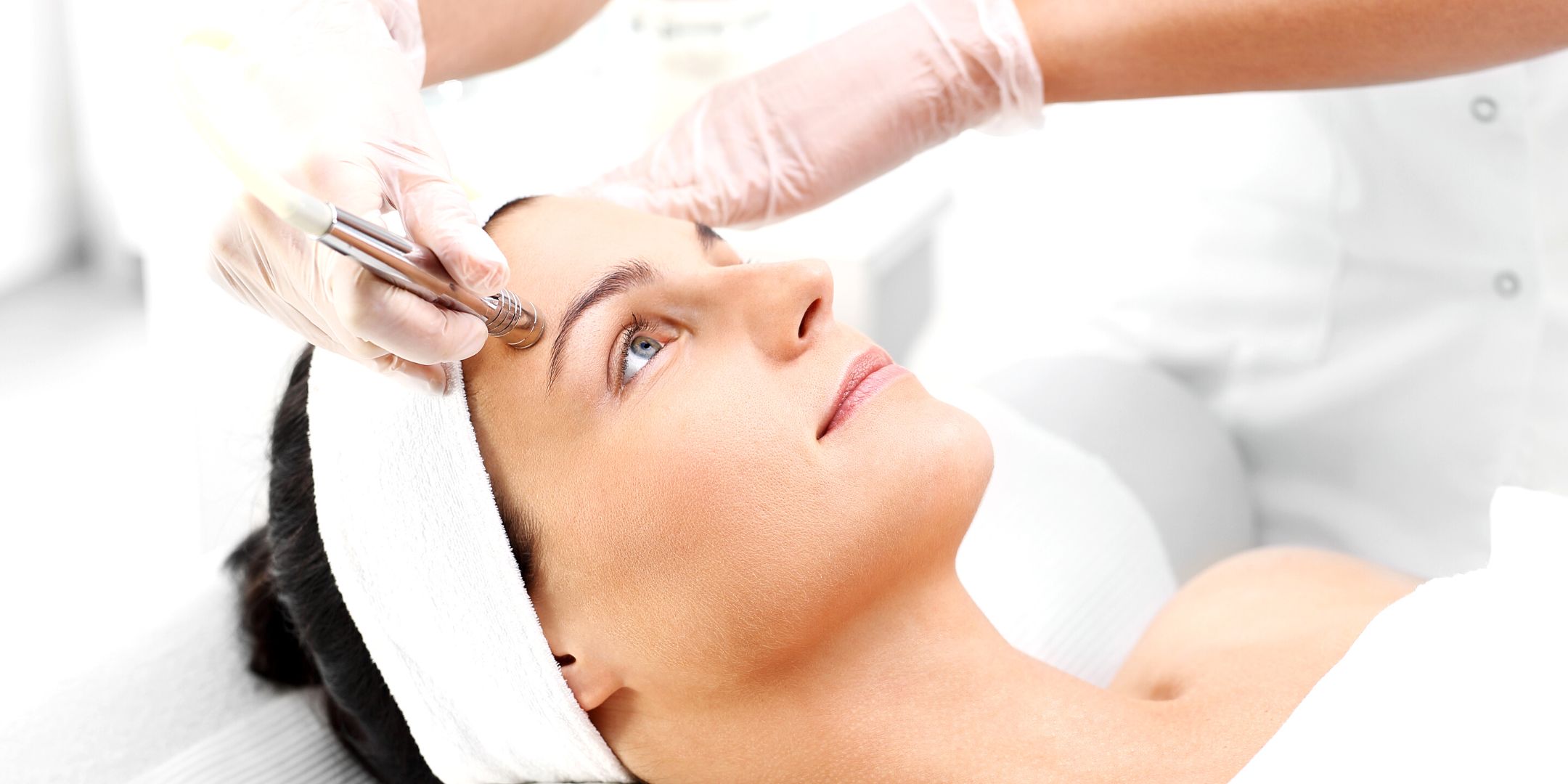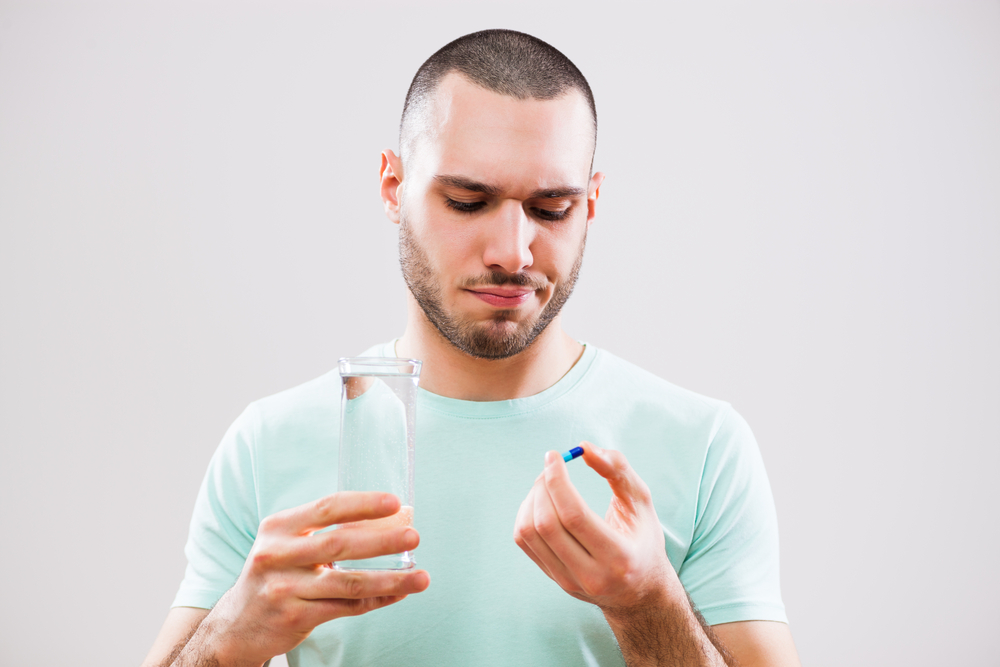- Heart-shaped nipples are a form of body modification that can be achieved through tattooing or nipple grafting.
- Plastic surgeons condemn the majority of body modification procedures, citing a high risk of infection and scarring.
- Getting heart-shaped nipples is relatively safe, so long as you do it the right way and in the right setting.
Your belly button or tongue piercing is unlikely to shock anyone these days — except maybe your elderly relatives. Once a taboo subject, body modifications have become quite common, particularly in larger American cities.
Body modification encompasses everything from ear piercing and tattoos, to more extreme procedures involving subdermal implants, surgical procedures, and saline injections. Just check out the so-called “bagel head” trend — the process of injecting saline solution into the forehead to create a bagel-shaped lump — to see what we mean.
One of the hottest new trends in the body modification world is heart-shaped nipples. As appealing as they might be, there’s a pretty good chance your plastic surgeon won’t take the job.
Nipple shaping: the procedure
Just like most body modification procedures, areola modification is almost never performed by an actual doctor.
Instead, it’s usually done by the hands of a tattoo artist. The reason for this is two-fold: for one, cosmetic surgery is unlikely to yield the desired results because healing and scarring will change the way the hearts look. Secondly, the majority of cosmetic surgeons condemn such body modifications (more on that below).
If you’re dead set on getting heart-studded breasts, though, a good tattoo artist or body modification artist is your safest bet. Nipple tattoos have long been used in breast reconstruction surgery to create a more natural areola look in breast cancer patients who have had a mammoplasty.
Transgender patients may also opt for tattooed nipples in order to create a more natural and dimensional look or to cover scars following surgery.
This is all good news for those who are into the nipple tattoo trend, since there are several professional tattoo artists who are well-versed in the process.
The procedure is just like getting a regular tattoo; you’ll have it performed at your choice tattoo shop. That said, you should ideally choose an artist with experience tattooing nipples for the best results. Be warned, nipple tattoos are some of the most painful due to the area’s sensitivity.
Your tattoo artist will work with you to adjust the physical appearance of your nipple. You’ll be able to alter the size, color, and shape of the areola.
Heart-shaped nipples aren’t the only nipple shapes getting a lot of attention these days. Tattoo artists and body modification practitioners have also tattooed the areolas into stars, flowers, spider webs, and other shapes.
What about nipple grafting?
During breast reconstruction, surgical augmentations, or reductions, doctors may adjust the appearance of the nipple and areola using a procedure called nipple grafting.
This technique requires a doctor to remove the outer layer of the nipple and cover it with a graft from another part of the body. Patients are able to tailor the shape and size of the new nipple to their desires.
The biggest drawback with this method is that nipple grafts compromise the ability to breastfeed and tend to reduce nipple sensitivity. In some cases, those who undergo nipple grafting procedures also experience hypopigmentation in the nipple and areola.
By and large, plastic surgeons condemn this method of nipple modification — due to risks associated with healing — unless it’s absolutely necessary for medical reasons.
Plastic surgeons and body modification
China, India, Japan, and Ethiopia are some of the countries where body modification has long been used in cultural and religious ceremonies.
In the United States, widespread body modification is relatively new. Whether it be the lip piercing trend of the ‘90s or the contemporary art of injecting a foreign object beneath the skin for aesthetic purposes, Americans have mainly borrowed trends from other parts of the world.
Even the most common forms of body modification have their roots in religious traditions, according to anthropologists. For example, in the U.S. male circumcision is a widely accepted form of body modification that was born in the Jewish tradition, but is now a common practice outside of the Jewish faith that some believe is necessary for preventative healthcare.
There are plenty more accepted forms, so where do plastic surgeons draw the line?
In general, board-certified plastic surgeons do not perform nipple surgery or any other extreme body modifications. However, some will acknowledge that plastic surgery is simply a more socially acceptable form of body modification.
Most professionals distinguish body modification from cosmetic surgery by who performs the procedure. In other words, a physical alteration procedure that does not involve a plastic surgeon, but instead a piercer or tattoo artist, is more likely to be considered body modification.
Simply put, plastic surgeons are unlike piercers, tattoo artists, and body mod artists because they only perform procedures that are time-honored, peer-reviewed and closely monitored by the Food and Drug Administration. Plus, doctors typically have much more training under their belts.
In the patients’ best interest
What is the role of a good plastic surgeon? It isn’t all about training, degrees, awards, and surgical skill.
It’s also about how well a surgeon guides their patient to achieve the most desirable end results. When it comes to advising on certain body modifications, most surgeons encourage patients to skip them altogether. Here are some reasons why:
- Risks — The fact of the matter is, body modification procedures come with a lot more risks than plastic surgery. According to Dr. Geoffrey Lyons, Chairman of the Australian Society for Plastic Surgeons, many body mods come with a high risk of infection, and many are classified as “experimental.” For example, tongue splitting procedures can cause heavy bleeding and serious infections. He’s even had to amputate a finger after an infection caused by a body modification.
- Ethics — One reason why many plastic surgeons condemn more serious forms of body modification — specifically those that require permanent stretching — is because there is a higher number of patients who indicate regret with body modification compared with cosmetic surgery. Most of these aesthetic adjustments can be altered, however. Of course, laser tattoo removal can effectively erase an unwanted tattoo, and earlobe repair surgery can patch gaping holes left by ear gauging. Some are irreversible, though, such as eyeball tattoos.
- Scarring — Adjusting the appearance of body parts can be done the right way. The Association of Professional Piercers (APP) sets out strict guidelines to reduce scarring and promote fast healing, but because many body modification artists are not certified and monitored in the same way that doctors are, there are more risks associated with long-term scarring. In the plastic surgery world, professionals go to lengths to avoid scaring. The best plastic surgeons are those who leave the least noticeable scars, after all. However, with certain body modification procedures, specifically scarification (the intentional scarring for aesthetic purposes), scars are actually desired.
- Comfort — Another reason why plastic surgeons often warn against undergoing body modification procedures is because most practitioners do not have the same ability to administer anesthesia as cosmetic surgeons do. That’s not across-the-board though; many tattoo parlors now offer topical anesthetics to numb the area being worked on. More intense body modifications must sometimes be performed without any anesthetics at all.
On the plus side
In general, plastic surgeons don’t advise against getting tattoos, so long as they’re done in a safe, professional environment. Heart-shaped nipples are a good example of a body modification procedure with a low risk factor.
Besides the fact you might experience some regret down the road, there’s a relatively small chance that you’ll experience any significant complications if you go under the needle for designer nipples at a clean and licensed establishment.









